|
Fine Motor Activities
Fine motor activities may and should, be incorporated
into another subject area. A 'fine motor centre'
doesn't need to be a separate entity. It is more
successful it is part of another activity. For
instance.... a reading centre becomes both a Reading
and a Fine Motor Centre when a child is using Wikki
Stix to lay on top of large letters on a paper. At a
Math Centre, have a bowl of marbles, a melon baller,
one dice/die, and a plastic ice cube tray (the kind
that makes a zillion little ice cubes). The children
take turns rolling a dice and use the melon baller to
pick that number of marbles to put in their ice cube
tray. The activity is now both Math & FM. If a FM
activity is not a part of something else, it's becomes
simply exercise and is viewed as such.
These are some activities to strength the small
muscles of the hand.

Hiding small objects in Silly Putty hide a couple of
coins in 2 or 3 globs of Silly Putty. Children use
their thumb and first finger (pincher grip) to locate
the coins. Then they hide the coins for the teacher
to find.

Creating pictures on a pegboard, this is at such an
angle that it brings the wrist back into the correct
position for writing. Children use their thumbs and
first fingers to pick up the little plastic pegs and
push them into the pegboard screen. Children may work
in pairs or individually on these creations.

Pick up and sort objects such as blocks, spools,
coins, beans, marbles,
cotton balls, pins, buttons, straws, nails, nuts,
bolts, popcorn, and place them into containers of
varying sizes i.e. egg cartons, cups, mugs, jars.

Pick up objects (blocks, cotton balls, counters, etc.)
using various sized tongs, transferring them between
containers

Stack objects (i.e. coins, cards, checkers, buttons,
blocks, etc.)
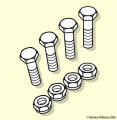

Screw and unscrew objects such as nuts and bolts, caps
from jars, etc.

String beads onto a shoelace. Lace various sized beads. Any activity involving
the
use of both hands is good to develop bilateral integration.

Run a threaded needle through cloth

Fasten safety pins

Cut straight and curved lines/shapes drawn on paper
with scissors.

Play the piano

Type

Crumple paper in a small ball and then flick it with
the finger (play "soccer" with the paper ball)

Shuffle cards, deal cards one by one, turn cards over

Roll a pencil between thumb and fingers without
dropping it

Knead dough

Stick small objects into play dough for him/her to
pull out

Wind thread on a spool evenly

Put rubber bands around various size containers and
objects

Use tweezers to pick up small objects

Move spoonfuls of small objects from one bowl to
another



Do up buttons, zippers, hooks, etc. Tie shoelaces

Cut finger and toenails with clippers

Trace and copy letters
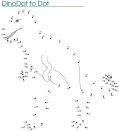
Do connect the dot puzzles and Solve mazes

Manually sharpen pencils

Tie a box with string or ribbon
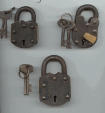
Put keys into locks to open doors

Put paper clips onto paper
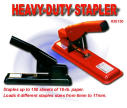

Use a stapler and Remove staples with a staple remover

Place clothespins on the edge of a box or container or rim of a can.
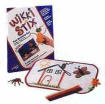
Use Wikki Stix to form shapes, letters, numbers, and
other designs. You may use a template.

Colour using the flat side of a crayon. Put paper
over leaves, stencils, and other objects so that the
child gets sensory feedback as he colours.

Use sprayer bottles filled with water and sponges to
have the child "clean" a desk or table, and then
squeeze the excess water out.
Have a cutting centre. Give the child a magazine and
let and glue on pictures to make a poster.
Fill a sensory table/bucket with coloured pompoms and
provide small tongs and baskets, the children fill
their baskets.
Use tweezers to pickup small items in egg cartons or
something else.
Older children may practice strengthening their
fingers for cutting by using a rubber band to just
stretch, release, etc.
Play dough play with young children with the terms:
poke, squeeze,
pound, press, knead, etc. good for language too.
Maths: an activity for 1-4 students, each has a
plastic ice cube tray and either small tongs or melon
ballers One person rolls a dice and picks up the
number of items to match the number on the dice. Dice
passes to next person...play continues until tray is
filled. This uses more than the pincers grip as a
sideways motion is required and is good for one-to-one
correspondence.
RICE TABLE: have a mixture of rice and several kinds
of beans. Child uses a large slotted spoon and picks
up a spoonful of rice mixture.
They are to carefully shake the spoon back and forth
until the rice falls through the slots and only the
beans are left. Pour the beans into a small container.
Goal is to continue until the container is
filled. Arm, wrist, and hand coordination are required
to do this efficiently.
| 
